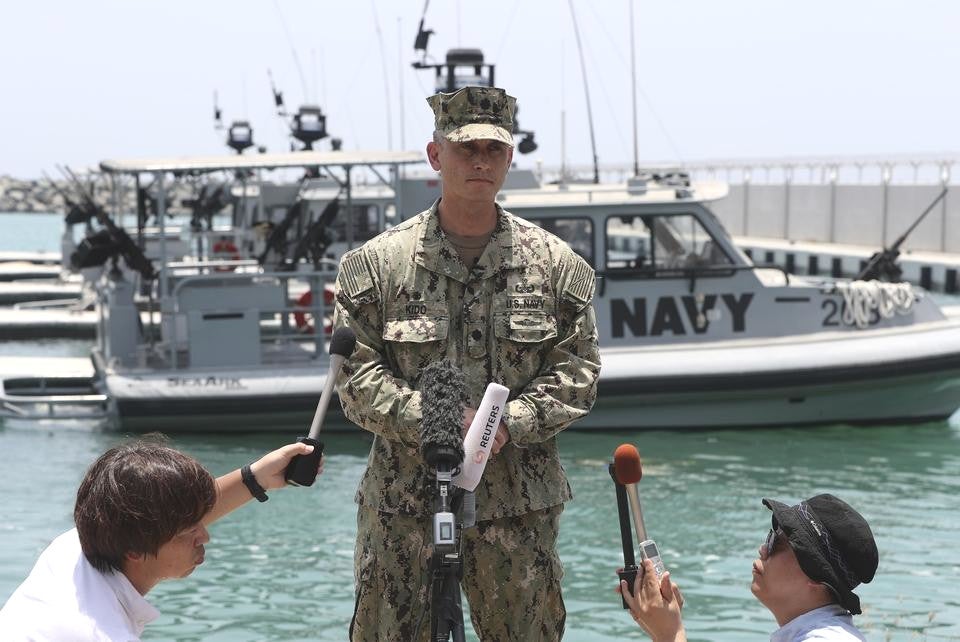The United States has provided more details about the evidence it has collected that links Iran to the attack on the Kokuka Courageous, one of a number of commercial tankers that have suffered attacks in the Gulf of Oman since the beginning of May. The U.S. military has also dismissed the possibility that a “flying object” such as a rocket or missile hit the ship, saying the damage the ship sustained is consistent with a limpet mine attack. This additional information comes as the United States prepares to send additional forces to the Middle East and amid a spate of rocket attacks against foreign oil companies and military facilities hosting American troops in Iraq that injured at least three people.
U.S. Navy Commander Sean Kido, head of Explosive Ordnance Disposal Mobile Unit 11 (EODMU 11) provided the updates at U.S. government-organized event for journalists in the United Arab Emirates on June 19, 2019. EODMU 11’s main mission is explosive ordnance disposal, including the safe removal of naval mines, but also has the organic capability to conduct related weapons technical intelligence duties to identify the characteristics and origins of recovered explosive devices. The unit is presently assigned to the Navy’s Fifth Fleet’s Commander, Task Group (CTG) 56.1 and is responsible for performing those missions, as well as other combat diving and salvage operations, throughout the Middle East.
Reporters inspected physical evidence at an American military facility in the Port of Fujairah, which sits on the Gulf of Oman, and then rode on small Navy boats to see the Kokuka Courageous for themselves. That tanker, along with a second one that suffered a limpet mine attack on June 13, 2019, the Front Altair, are both presently in Fujairah undergoing inspection. The U.S. government also blames Iran for a separate set of attacks on four other tankers right off the coast of the UAE that occurred roughly a month ago and says limpet mines were also involved in those incidents.
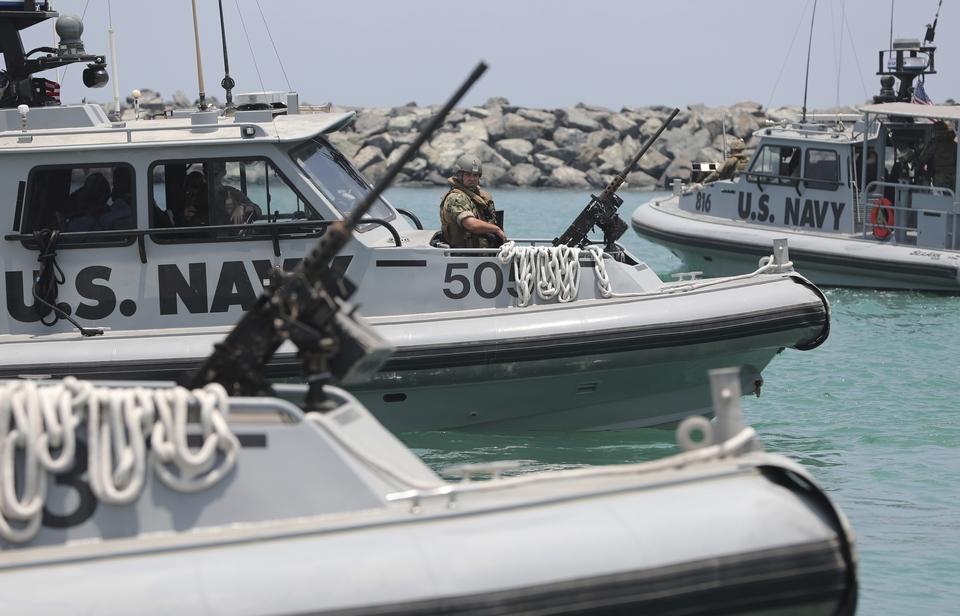
“The limpet mine that was used in the attack is distinguishable and it’s also strikingly bearing a resemblance to Iranian mines that have already been publicly displayed in Iranian military parades,” Kido told reporters. “There are distinguishing features,” though he reportedly declined to elaborate. The U.S. military has previously handed out a picture of a conical 90-pound limpet mine that a company in Iran, which has ties to the country’s Islamic Revolutionary Guard Corps (IRGC), produces.
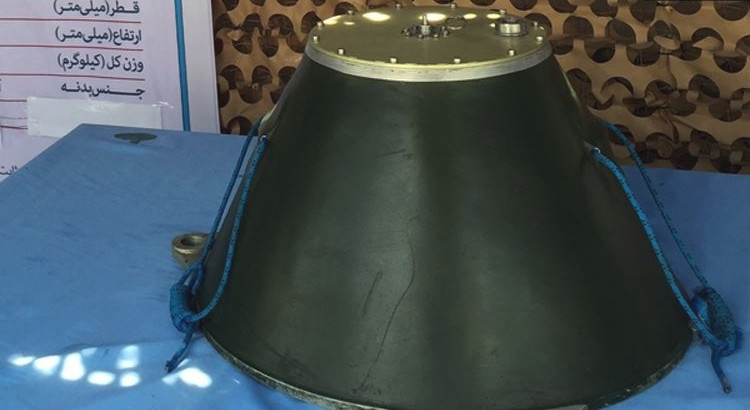
U.S. military investigators displayed a circular magnet they had recovered from the Kokuka Courageous‘s hull, one of a number arranged in a circle that would have held the mine in place. The United States had previously released images of this object, which remained stuck to the ship after Iranian forces arrived to remove an undetonated mine hours after the attack.
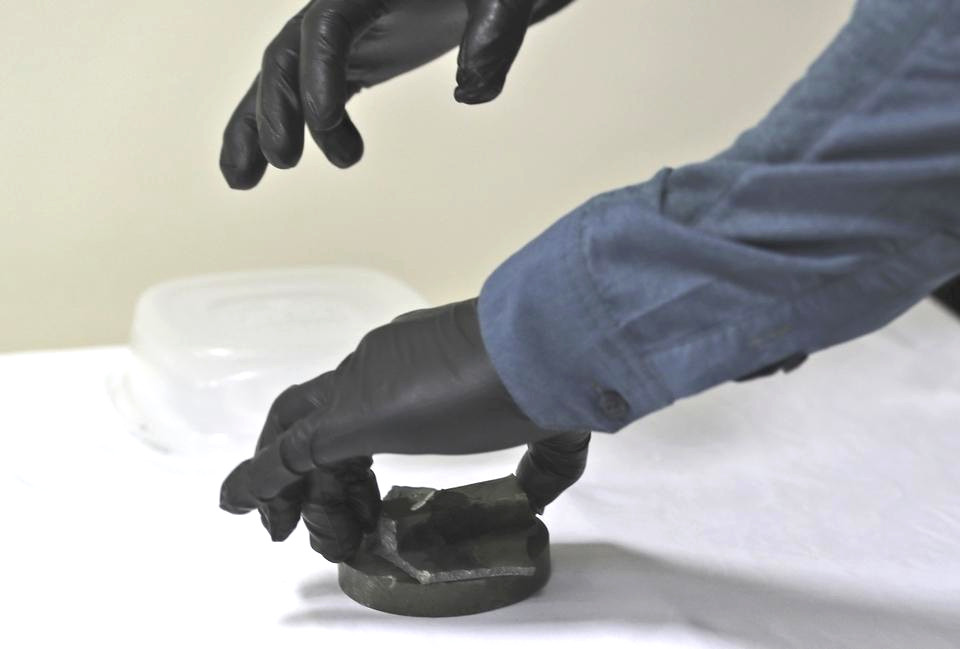
There was also evidence that nails had helped affix the mine to the ship. Navy personnel in the area the time said that they observed the Iranians using a crowbar to pry the mine off, according to Kido. The Navy officer said that U.S. personnel had found fragments of “aluminum material, as well as a composite material” from the mine that did detonate, too.
“We recovered biometric information which can be used to build a criminal case to hold the individual responsible,” Kido added, including a handprint and individual fingerprints. The U.S. military had previously released a photograph showing the handprint on the side of Kokuka Courageous‘s hull.

“The damage at the blast hole is consistent with a limpet mine attack,” Kido continued. “It’s not consistent with an external flying object striking the ship.”
This last part directly contradicts statements from Yutaka Katada, president of shipping company Kokuka Sangyo, which owns the Kokuka Courageous, who said last week that the ship’s crew had reported at least one “flying object” hitting the ship. It remains possible that what the sailors saw was the attackers trying and failing to shoot down a U.S. MQ-9 Reaper drone with a shoulder-fired surface-to-air missile in the lead up to the incident.
Kido offered no explanation as to why the U.S. government has not recovered any notable evidence from the Front Altair, despite that ship also being safely in Fujairah now. This second tanker experienced a major fire after the attacks, which took hours to bring under control and may have damaged or destroyed similar evidence to that found on the Kokuka Courageous. The officer did say that the placement of the mines significantly above the waterline indicated that the attackers wanted to damage both of the ships, not sink them.

For its part, Iran continues to vociferously deny it had any involvement, despite the mounting evidence pointing to at least complicity in the attacks. To date, no group of any kind has claimed responsibility for the tanker attacks in May or June.
Since May, the United States has been warning about the increased risk of attacks from Iran and Iranian proxies, especially against U.S. military personnel, across the region, though that these threats are imminent remains murky. But there have been a series of rocket attacks in Iraq in the past few days, raising concerns about whether this may become a more routine occurrence in that country, at least.
On June 17, 2019, three rockets hit Camp Taji, a base where U.S. and other foreign military forces are training their Iraqi counterparts, but did not reportedly cause any casualties. Another rocket attack on a second facility caused a small fire. It is unclear who the target or targets were, however, with reports that the latter attack seemed to be focused on an Iraqi air defense site.
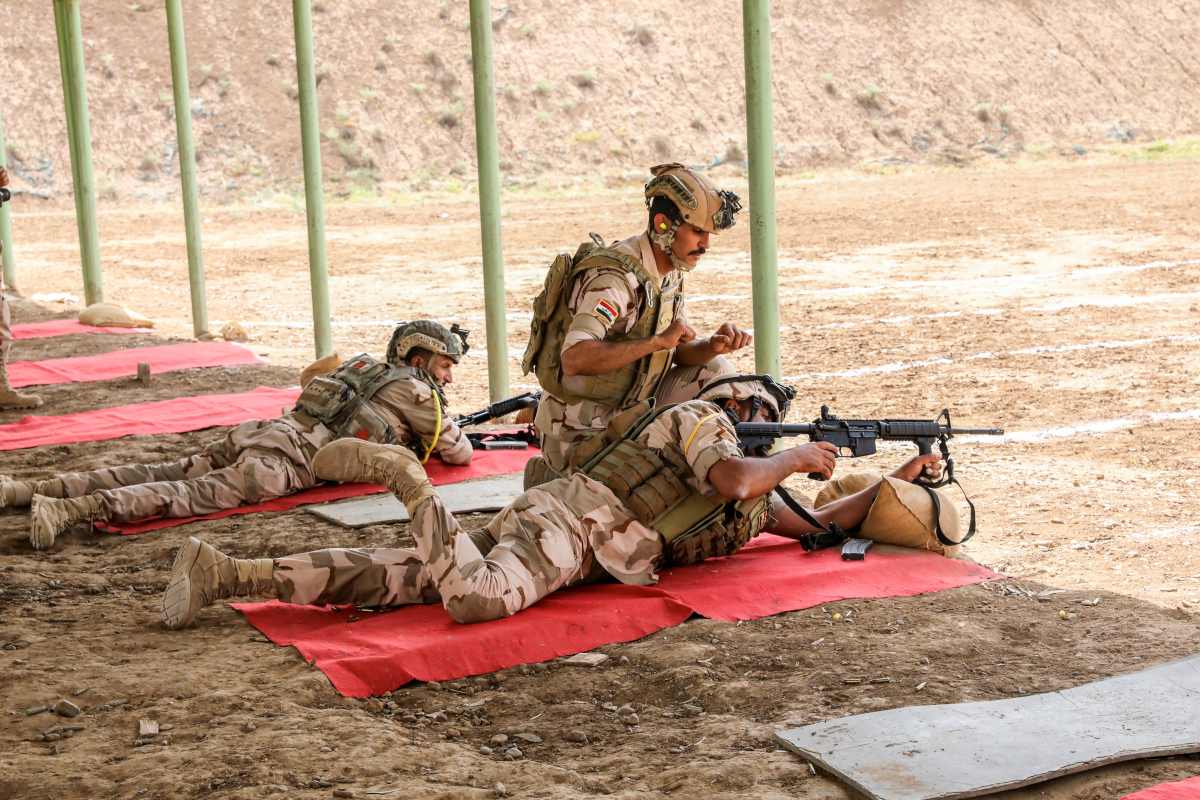
Earlier today, a single rocket hit the Burjesia residential and operations headquarters, which sits west of the city of Basra and is situated within the Zubair and Rumeila oil fields. The facility, which the Iraqi Drilling Company operates, hosts workers from U.S.-headquartered ExxonMobile and six other foreign oil companies. The rocket injured three people, prompting firms to order their personnel to evacuate. More attacks have reportedly occurred since then and there are unconfirmed photographs purporting to show Iraqi security forces securing abandoned improvised rocket launchers.
ExxonMobile had reportedly evacuated its personnel from Iraq in May 2019, following the U.S. government decision to order all non-essential diplomatic personnel out of the country and the issuance of a number of serious travel advisories. The oil companies workers are said to have just begun to return.
No one has claimed responsibility for any of these attacks, either. An earlier attack on the Green Zone in Baghdad involving a single rocket on May 19, 2019, appeared to be linked to Iranian-backed militias. The U.S. government also blames Iranian-supported groups for similar indirect fire attacks on the U.S. consulate in Basra last year.
It is unclear what, if any, impacts these new rocket attacks, especially the one resulting in casualties outside Basra, may have on the overall situation in the region. Despite calls for military action from some members of Congress, President Donald Trump’s administration has remained focused more initially on trying to build a consensus among its allies and partners about Iran’s responsibility for the tanker attacks and other acts of aggression. Some countries, such as Germany, remain unswayed by the evidence the United States has proffered up so far and have called for “maximum restraint.”
“We’ll see what happens,” Trump had told reporters on June 18, 2019. “Let me just say this: We are very prepared.”
The day before, the U.S. government announced that it would be deploying an additional 1,000 personnel to the Middle East. Reports said that this force package would include additional intelligence, surveillance, and reconnaissance aircraft, force protection troops, and engineers, similar to other deployments that the United States announced in May. These earlier plans included a squadron of F-15E Strike Eagles, which arrived at Al Dhafra Air Base on June 19, 2019.
“Even this moment right here, communicating to Iran that we are there to deter aggression,” Secretary of State Mike Pompeo told reporters after meeting with the heads of U.S. Central Command and U.S. Special Operations Command in Florida on June 18, 2019. “President Trump does not want war, and we will continue to communicate that message, while doing the things that are necessary to protect American interests in the region.”
But Pompeo also made clear that the U.S. government was not about to take sole responsibility for safeguarding the continued flow of maritime commerce in the region, especially through the contentious and strategic Strait of Hormuz. “The United States is prepared to do its part, but every nation that has a deep interest in protecting that shipping lane so that energy can move around the world and support their economies needs to make sure they understand the real threat – the real threat to their interests in the region, and the real threat to their countries’ economies if we’re not successful in doing that,” he said.
Some took Pompeo’s remarks to suggest that the United States might be seeking to form an international coalition to escort commercial ships through the region, though the U.S. government has not formally announced any such plan. The United Kingdom, which has also publicly blamed Iran from the attacks on Kokuka Courageous and Front Altair, has also announced plans to deploy a contingent of Royal Marines to the area.
Unfortunately, despite the public overtures from all the parties involved about their desire to avoid war, the growing evidence tying Iran to the tanker incidents along with these new rocket attacks in Iraq show that the situation exhibits few signs of de-escalation at this time.
Contact the author: joe@thedrive.com
